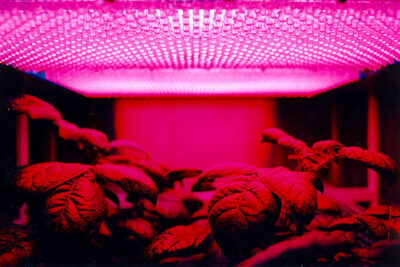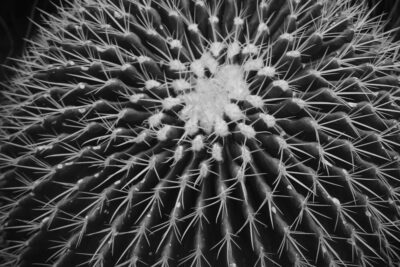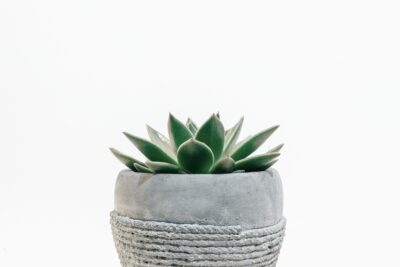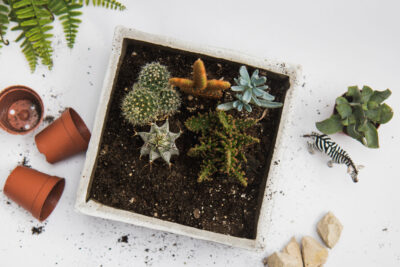
Do Succulents Need Sunlight in Winter?

As the winter months approach, many succulent owners may wonder whether their plants need sunlight during this season. Succulents are known for their ability to survive in harsh conditions, but understanding their specific needs when it comes to sunlight is crucial for their overall health and well-being.
We will explore the importance of sunlight for succulents in winter and discuss how their sunlight requirements may differ from other seasons. We will also provide some tips and guidelines on how to ensure that your succulents receive adequate sunlight during the colder months without compromising their health. Whether you are a seasoned succulent enthusiast or a beginner, this article will provide you with valuable insights on how to care for your succulents during the winter season.
- Yes, succulents still need sunlight in winter
- Place them in a location with bright, indirect sunlight
- Consider using a grow light if natural sunlight is limited
- Rotate the succulents regularly to ensure even exposure to light
- Be mindful of temperature fluctuations and protect them from frost
- Water sparingly, allowing the soil to dry out between waterings
- Monitor the amount of sunlight they receive to prevent sunburn
- Consider moving them closer to a window for more sunlight
- Be cautious of placing them near drafts or heating vents
- Frequently Asked Questions
Yes, succulents still need sunlight in winter
During the winter months, it is a common misconception that succulents do not require sunlight. However, this is far from the truth. Succulents, just like any other plant, need sunlight to survive and thrive.
Why do succulents need sunlight in winter?
Succulents are known for their ability to store water in their leaves, stems, and roots. This adaptation allows them to survive in arid conditions. However, in order to maintain their growth and overall health, succulents still need access to sunlight, even during the winter months.
Sunlight is essential for succulents because it plays a crucial role in the process of photosynthesis. Photosynthesis is the process by which plants convert light energy into chemical energy, providing them with the necessary nutrients to grow and thrive. Without sufficient sunlight, succulents may become weak, leggy, and more prone to diseases.
How much sunlight do succulents need in winter?
 The Effects of Direct Sunlight on Succulents: What You Need to Know
The Effects of Direct Sunlight on Succulents: What You Need to KnowWhile succulents do require sunlight, it is important to note that the amount of sunlight they need in winter may be different compared to other seasons. During the winter months, the sun's intensity is generally lower, and the days are shorter. Therefore, it is necessary to adjust the exposure to sunlight accordingly.
As a general guideline, it is recommended to provide succulents with at least 4-6 hours of indirect sunlight per day. Placing them near a south-facing window or using grow lights can help ensure they receive the necessary amount of light. However, it is essential to monitor the succulents closely and make adjustments as needed to prevent sunburn or damage from excessive light exposure.
Signs of insufficient sunlight in succulents
- Stretching or elongation of stems
- Pale or yellowish coloration
- Leaves becoming thin or flat
- Decreased growth rate
- Leggy or weak appearance
If you notice any of these signs in your succulents during the winter months, it is a clear indication that they are not receiving enough sunlight. In such cases, it is crucial to provide them with additional light sources or relocate them to a spot with better sun exposure.
Conclusion
While succulents may require less sunlight compared to other plants, they still need access to sunlight even during the winter months. Providing them with the right amount of light will help maintain their health, prevent stretching, and promote beautiful growth. So, make sure to give your succulents the sunlight they need to thrive, even when the temperatures drop.
Place them in a location with bright, indirect sunlight
 Unveiling the Secrets of Succulents' Resilience in the Harsh Desert
Unveiling the Secrets of Succulents' Resilience in the Harsh DesertDuring the winter months, succulents still require sunlight to thrive. However, it is important to be mindful of the intensity of the sunlight and the duration of exposure. Placing succulents in direct sunlight during winter can be harmful to their health.
Why is bright, indirect sunlight important?
Succulents are native to arid environments and are adapted to receiving ample sunlight. Exposure to sunlight helps them undergo photosynthesis, a process that enables them to convert light energy into chemical energy, promoting growth and overall plant health.
However, during winter, the sunlight is less intense compared to the summer months. Placing succulents directly under the winter sun can lead to sunburn and scorching of their leaves. This can result in irreversible damage, causing the leaves to turn brown or even black.
What is bright, indirect sunlight?
Bright, indirect sunlight refers to providing your succulents with sufficient light but without direct exposure to the sun's rays. This can be achieved by placing them near a window that receives bright light throughout the day, but where the direct sunlight is filtered through a sheer curtain or blinds.
Tips for providing the right amount of sunlight in winter:
 Managing Sun Stress: How Succulents Cope with Excessive Sun Exposure
Managing Sun Stress: How Succulents Cope with Excessive Sun Exposure- Observe the lighting conditions in your home during the winter months. Identify a window that receives bright light but is not directly exposed to the sun.
- If your succulents are currently placed in a spot with direct sunlight, gradually move them to a location with bright, indirect sunlight. This will allow them to acclimate to the new lighting conditions without shock.
- Rotate your succulents regularly to ensure all sides receive equal exposure to light. This will help prevent them from leaning or stretching towards the light source.
- Consider using grow lights specifically designed for plants if you have limited access to natural light. These lights provide the necessary spectrum of light for succulents to thrive.
Final Thoughts
While succulents need sunlight even in winter, it is crucial to provide them with the right amount and type of light. Placing them in a location with bright, indirect sunlight will ensure their health and prevent damage caused by excessive exposure. By following these tips, you can continue to enjoy the beauty of your succulents throughout the winter season.
Consider using a grow light if natural sunlight is limited
During the winter months, succulents may not receive as much natural sunlight as they do during the rest of the year. This decrease in sunlight can have an impact on their growth and overall health. However, there are ways to ensure that your succulents still receive the light they need even during the darker winter days.
If you notice that your succulents are not getting enough sunlight, consider using a grow light. A grow light is an artificial light source designed to mimic the sun's rays and provide the necessary light for plant growth. They come in various types, including fluorescent and LED lights, each with their own benefits and considerations.
When choosing a grow light for your succulents, opt for one that emits light in the blue and red spectrum. These wavelengths are essential for photosynthesis, which is crucial for the healthy growth of plants. Additionally, make sure to position the grow light within a suitable distance from your succulents, as too much or too little light can cause issues.
Using a timer for your grow light can also help to ensure that your succulents receive the consistent amount of light they need. Set the timer to mimic the natural sunlight cycle, typically around 12-14 hours of light per day. This will help your succulents maintain their natural growth patterns and prevent them from becoming leggy or stretched.
Remember that while grow lights can be a great solution for providing light during the winter, they should not be used as a substitute for natural sunlight. Whenever possible, try to place your succulents near a bright window where they can receive some natural light. Supplementing with a grow light can help to fill in the gaps and ensure that your succulents thrive even in the darkest months of the year.
 Can Succulents Thrive in Outdoor Summer Conditions?
Can Succulents Thrive in Outdoor Summer Conditions?Rotate the succulents regularly to ensure even exposure to light
During the winter months, it is crucial to provide adequate sunlight to your succulents. While succulents are known for their ability to withstand harsh conditions, they still need sunlight to thrive. However, the intensity and duration of sunlight may vary depending on the specific succulent variety.
One effective way to ensure even exposure to light is by regularly rotating your succulents. By rotating them every few weeks, you can prevent one side of the plant from receiving more sunlight than the other. This is especially important if you have your succulents placed near a window or in a location where sunlight is limited.
Consider the lighting conditions in your home
Before deciding on the ideal placement for your succulents, it is essential to evaluate the lighting conditions in your home. Different succulent varieties have varying light requirements, so understanding the lighting conditions can help you determine the best spot for your plants.
If you have a bright and sunny window, it is a great place to keep succulents that require full sun exposure. These succulents generally have vibrant colors and thick leaves. On the other hand, if your windows receive limited sunlight, it is better to opt for succulents that can tolerate low light conditions.
Utilize artificial lighting for succulents in low-light areas
For succulents placed in areas with limited natural sunlight, artificial lighting can be a lifesaver. Consider investing in grow lights specifically designed for indoor plants. These lights mimic natural sunlight and provide the necessary light spectrum for succulent growth.
When using artificial lighting, it's crucial to position the lights at an appropriate distance from the plants. Too close, and the succulents may burn, while too far, and they may not receive sufficient light. Follow the manufacturer's guidelines to ensure optimal placement and duration for your succulents.
Observe your succulents for signs of inadequate light
Even with proper placement and lighting, it is essential to observe your succulents for any signs of inadequate light. If your succulents are not receiving enough sunlight, they may exhibit certain symptoms such as elongated stems, pale or yellowing leaves, and stretching towards the light source.
 Succulent Flowering Times: When Do They Bloom?
Succulent Flowering Times: When Do They Bloom?If you notice these signs, it may be necessary to adjust the placement of your succulents or supplement their lighting. Remember, each succulent is unique, and their light requirements can vary, so it's crucial to pay attention to their individual needs.
By providing the right amount of sunlight, whether natural or artificial, your succulents can thrive even during the winter months. Remember to rotate them regularly, consider the lighting conditions in your home, utilize artificial lighting when needed, and observe your plants for signs of inadequate light. With these tips, you can ensure your succulents receive the light they need to stay healthy and vibrant.
Be mindful of temperature fluctuations and protect them from frost
During the winter months, succulents may need some extra care and attention to ensure their well-being. One important factor to consider is temperature fluctuations. While succulents are known for their ability to withstand extreme conditions, some species may be more sensitive to cold temperatures.
It's crucial to monitor the temperature and protect your succulents from frost. Frost can be detrimental to succulents as it can freeze the water inside their cells, leading to damage or even death. To prevent frost damage, consider the following precautions:
- Provide proper insulation: If your succulents are in containers, move them indoors or to a more sheltered area during particularly cold nights. You can also use insulating materials like frost blankets or horticultural fleece to cover the plants.
- Choose the right location: If you have succulents planted in the ground, make sure they are in a well-draining area. Avoid locations where water can pool or collect, as this can increase the risk of frost damage.
- Monitor the weather: Stay informed about the weather forecast and be prepared to take action if temperatures are expected to drop below freezing. Planning ahead can help you protect your succulents in a timely manner.
Remember, not all succulents have the same cold tolerance. Some varieties, like Sedum and Sempervivum, are more cold-hardy and can withstand freezing temperatures with minimal protection. On the other hand, tender succulents like Echeveria and Aloe may require extra care and should be brought indoors during freezing weather.
By being aware of temperature fluctuations and taking measures to protect your succulents from frost, you can ensure their health and longevity throughout the winter season.
 Unlocking the Secrets: Expert Tips for Growing Large Succulents
Unlocking the Secrets: Expert Tips for Growing Large SucculentsWater sparingly, allowing the soil to dry out between waterings
When it comes to caring for succulents in winter, one of the most common questions is whether they need sunlight. While succulents are known for their ability to withstand drought and thrive in bright sunlight, their needs can differ during the winter months.
Water sparingly, allowing the soil to dry out between waterings
In winter, succulents go through a period of dormancy where their growth slows down. During this time, their water requirements decrease significantly. It's important to adjust your watering routine accordingly to prevent overwatering, which can lead to root rot and other issues.
When watering your succulents in winter, make sure to allow the soil to dry out between waterings. Succulents prefer dry conditions, and overwatering can cause the roots to become waterlogged and susceptible to rot. Check the soil moisture level by inserting your finger about an inch into the soil. If it feels dry, it's time to water. However, if it's still moist, it's best to wait before watering again.
Provide adequate sunlight
While succulents may not require as much sunlight during the winter months, they still need some exposure to sunlight to maintain their health. Place your succulents in a location where they can receive bright, indirect light for a few hours each day. Avoid placing them in direct sunlight, especially during the hottest part of the day, as this can cause sunburn and damage the leaves.
 Encouraging Long Stems and Flowers in Succulents
Encouraging Long Stems and Flowers in SucculentsIf you notice your succulents stretching or leaning towards the light, it's a sign that they are not receiving enough sunlight. In this case, consider supplementing natural light with artificial grow lights to ensure they receive the necessary light intensity.
Protect them from cold drafts and extreme temperatures
Succulents are typically tolerant of a wide range of temperatures, but extreme cold can be detrimental to their health. During the winter, it's crucial to protect them from cold drafts and sudden temperature fluctuations.
Avoid placing succulents near windows or doors that may let in cold drafts. If temperatures drop below freezing in your area, it's advisable to bring indoor succulents closer to a heat source or provide them with additional insulation to prevent frost damage.
Monitor for signs of stress or disease
Even with proper care, succulents can still experience stress or disease during the winter months. Keep an eye out for signs such as yellowing or wilting leaves, soft or mushy stems, or the presence of pests.
If you notice any of these signs, take appropriate action to address the issue. This may involve adjusting your watering schedule, removing affected leaves or stems, or applying organic pest control methods.
 Can Succulents Thrive in Full Sunlight Without Suffering Damage?
Can Succulents Thrive in Full Sunlight Without Suffering Damage?By following these guidelines, you can ensure that your succulents receive the necessary care during the winter months. Remember to adjust your watering and light exposure to accommodate their winter dormancy, and protect them from extreme temperatures. With proper care, your succulents will continue to thrive and bring beauty to your indoor or outdoor space.
Monitor the amount of sunlight they receive to prevent sunburn
When it comes to caring for succulents, sunlight is a crucial factor to consider. These resilient plants thrive in bright light conditions, but what about during the winter months? Do succulents still need sunlight in winter?
The answer is yes, succulents do need sunlight, even in winter. However, the amount of sunlight they require may vary depending on the specific succulent species and the climate in which they are grown.
Preventing Sunburn
Succulents are adapted to survive in arid and sunny environments, which means they are typically equipped to handle a good amount of sunlight. However, during winter, the intensity of the sun's rays may decrease in some areas, making it less harsh for the plants. Nevertheless, it is important to monitor the amount of sunlight your succulents receive to prevent them from getting sunburnt.
Sunburn in succulents appears as discolored or bleached patches on the leaves. These patches can eventually lead to tissue damage and even death of the plant if left untreated. To avoid this, consider the following:
- Observe the sun's path: During winter, the angle of the sun changes, resulting in different patterns of sunlight throughout the day. Observe where the sunlight falls in your garden or indoor space and position your succulents accordingly.
- Provide filtered light: If you notice that the sunlight is too intense for your succulents during winter, you can provide them with filtered light. This can be achieved by using sheer curtains, window blinds, or placing them in a location where they receive indirect sunlight.
- Adjust their exposure: If your succulents are already accustomed to full sun exposure, you may not need to make drastic changes during winter. However, if they are primarily indoor plants or have been grown in shaded areas, gradually increase their exposure to sunlight to help them acclimate.
By monitoring the amount of sunlight your succulents receive and taking preventive measures, you can ensure that they continue to thrive during the winter months without suffering from sunburn.
 Cold Hardy Succulents: Flourishing in Chilly Climates
Cold Hardy Succulents: Flourishing in Chilly ClimatesConsider moving them closer to a window for more sunlight
If you have succulents indoors during the winter months, you may be wondering if they still need sunlight. The answer is yes, although the amount of sunlight they need may vary.
Succulents are known for their ability to thrive in bright and sunny conditions, and they require a good amount of sunlight to stay healthy. However, during the winter, the sun's angle changes, and the amount of natural light that reaches indoors decreases. This can affect the growth and overall health of your succulents.
To ensure that your succulents receive enough sunlight during the winter, consider moving them closer to a window. Placing them near a south-facing window is ideal, as it will provide the most direct sunlight. If you don't have a south-facing window, east or west-facing windows can also provide adequate light.
It's important to keep in mind that succulents can still get sunburned, even in winter. If you notice that your succulents' leaves are turning brown or becoming discolored, it may be a sign that they are getting too much direct sunlight. In this case, you can use sheer curtains or blinds to filter the light and protect your succulents from excessive exposure.
If you have multiple succulents, you can also rotate their positions near the window every few weeks. This will ensure that all your plants receive an equal amount of sunlight and prevent them from leaning towards one side due to uneven light distribution.
Supplementing with artificial light
If you have limited access to natural light or your succulents are not receiving enough sunlight near the window, you can supplement their light requirements with artificial light. There are various types of grow lights available in the market, specifically designed to mimic natural sunlight.
When using artificial light, it's important to ensure that the light source is placed at a suitable distance from the plants to prevent them from getting burned. The recommended distance will vary depending on the type of grow light you are using, so make sure to follow the manufacturer's instructions.
 What Temperature is Too Hot for Succulents?
What Temperature is Too Hot for Succulents?Remember that while sunlight is essential for succulents' growth, they also need a period of darkness to rest. Avoid leaving the grow lights on for 24 hours and provide your succulents with at least 6-8 hours of darkness each day.
Monitoring your succulents' health
As winter progresses, it's crucial to keep an eye on your succulents' health. Monitor their growth, leaf color, and overall appearance regularly. If you notice any signs of etiolation, such as stretching or elongated stems, it's a clear indication that your succulents are not receiving enough light.
Adjust their positioning near the window or increase the duration of artificial light to provide them with the necessary light intensity. Additionally, be mindful of overwatering during winter, as succulents' growth slows down, and they require less water than in warmer months.
By understanding the sunlight requirements of your succulents and making necessary adjustments, you can ensure that they remain healthy and vibrant even during the winter months.
Be cautious of placing them near drafts or heating vents
When it comes to caring for your succulents during the winter months, it's important to be mindful of their placement in your home. While succulents generally thrive in bright sunlight, it's essential to exercise caution when placing them near drafts or heating vents.
Succulents are known for their ability to tolerate drought conditions and are often associated with dry, arid climates. However, they are still sensitive to extreme temperature fluctuations and can be adversely affected by drafts or direct exposure to heat sources.
Drafts can quickly dehydrate your succulents, as the moving air can cause water to evaporate from the plant's leaves and soil at a faster rate. This can lead to dryness and stress for your succulents, potentially causing their leaves to shrivel or turn brown.
On the other hand, placing your succulents too close to heating vents can subject them to excessive heat. Succulents prefer moderate temperatures, and intense or prolonged exposure to heat can cause their leaves to become scorched or even burn.
To ensure the well-being of your succulents during the winter, it's best to find a balance. While they still require adequate sunlight, it's important to keep them away from direct drafts or heat sources.
Consider placing your succulents in a spot where they can receive bright, indirect sunlight. This can be near a window that gets plenty of natural light but is shielded from drafts. Alternatively, you can use blinds or curtains to filter the light if it's too intense for your plants.
If you notice that your succulents' leaves are starting to show signs of stress, such as wilting or discoloration, it may be a sign that they are not receiving enough sunlight. In this case, you can gradually increase their exposure to sunlight while still ensuring they are protected from drafts and excessive heat.
Remember, succulents are resilient plants, but they still require proper care, especially during the winter months. By being mindful of their placement and providing them with the right amount of sunlight, you can help your succulents thrive all year round.
Frequently Asked Questions
1. Do Succulents Need Sunlight in Winter?
Yes, succulents still need sunlight in winter, but they may require less direct sunlight compared to the summer months.
2. How often should I water my succulents?
Watering frequency for succulents depends on factors like the type of succulent, potting mix, and environmental conditions. Generally, it is recommended to water them when the soil is completely dry.
3. Can I propagate succulents from leaves?
Yes, many succulents can be propagated from leaves. Simply remove a healthy leaf, let it dry for a few days, and then place it on well-draining soil until new roots and a baby plant emerge.
4. How do I prevent overwatering my succulents?
To prevent overwatering, ensure that your succulents are planted in well-draining soil and that their pots have drainage holes. Additionally, water them sparingly and only when the soil is completely dry.
If you want to read more articles similar to Do Succulents Need Sunlight in Winter?, you can visit the Growing Conditions category.






You Must Read